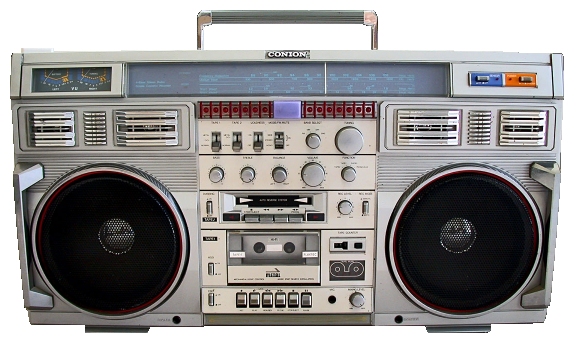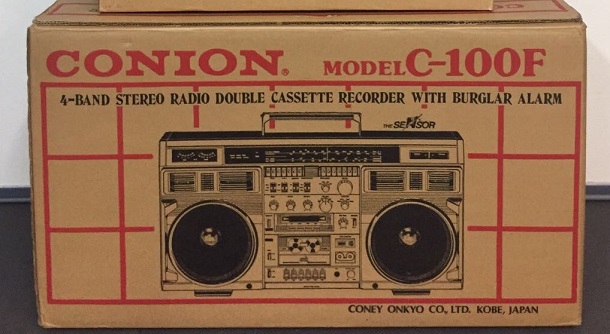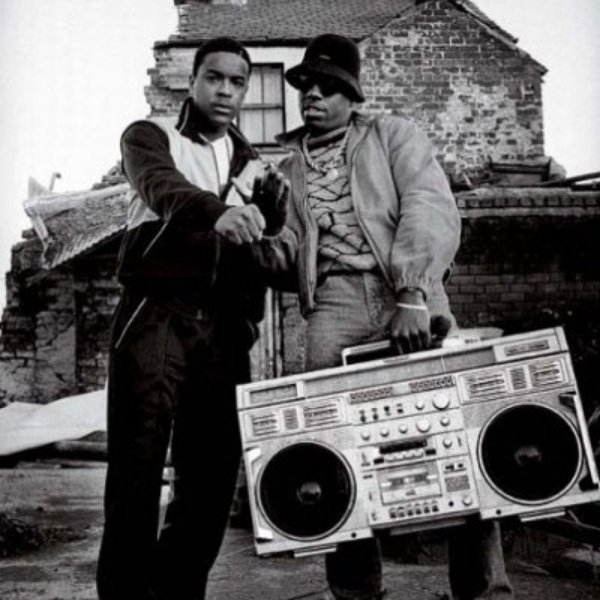As a monthly feature of this blog, Audiogon looks at some of the technological marvels of the past that may have preceded your birth, escaped your memory, or come and gone without ever having made an impression. This month, we take a look at the Conion C-100F.
Once upon a time, dinosaurs roamed the earth, giants that shook the ground with their collective roar. But there was one that stood above them all.
That time was the Eighties, and that giant amongst giants was the Conion C-100F.

The suburbs may have seen the music players of choice — Sony Walkmen and other gizmos of that ilk — growing smaller and smaller, but in the cities, on the streets, size was king. And there was no music player bigger and badder than the Conion C-100F, an off-brand Japanese-made boombox that sold for $450 or so in 1985 (about $1,100 in 2020 money).
The Conion C-100F (also marketed as the Helix HX-4365 and the Clairtone 7980) weighed in at a hulking 26.5 pounds BEFORE you slapped in the 10 D batteries needed to power the damn thing. It stood nearly 16 inches tall. It was nearly 30 inches wide. It was 8 inches deep. This was a shoulder buster if there ever was one. This was luggage. Luggage with its own security system.

No, seriously. It had its own security system, utilizing infrared rays to detect approaching forms. You could literally leave this boombox unguarded, with your keys and your wallet and your jewelry sitting next to it, and if anybody got too close, the alarm would go off. Which is nice, considering how much you would’ve spent to buy it in the first place.
The Conion C-100F was full of innovative features like that. It had two different stereo modes — normal and wide (which was really nothing more than a slight reverb to simulate a “stadium” effect). It had track search on the lower of two cassette decks, allowing you to find a specific song on your tape (provided there were song breaks). And it had a concealed compartment where you could stash additional cassettes … or anything else you might want to stash.
You want specs? OK, here’s some specs.
Output Power:
- 148W (PMPO)
- 45W (MUSIC)
- 30W (RMS) at 10% THD
Speakers:
- Woofers: 20cm, 5.4 ohm
- Mids: 6cm, 8 ohm
- Tweeters: 5cm
Frequency range:
- LW 150 – 280KHz
- MW 530 – 1600KHz
- SW 6 – 18MHz
- SW1 2.3 – 7MHz
- SW2 7 – 22MHz
- FM 88 – 108MHz

Yes, AM, FM and shortwave. It also included an RCA Auxiliary and Moving Magnet Phono-Stage, with one set of RCA jacks on the rear and a switch to select between the two. And of course, the Conion C-100F came with all the requisite knobs and switches to tailor your sound. And lights. More lights than the Rockefeller Square Christmas Tree.
What else is Conion known for? Not a whole lot. Conion was a sub-company of the Coney Onkyo Corporation of Japan, which is not to be confused with either Onkyo (which began as Osaka Denki Onkyo K.K in 1946) or Denon (which began as Nippon Denki Onkyo Kabushikigaisha in 1910). They made transistor radios and microphones in the ‘60s and ‘70s before getting into the boombox biz in the ‘80s.
But nothing else they made had the lasting cultural impact of the Conion C-100F. It remains highly sought after among boombox aficionados, with fully working models fetching in the $1,500 range today. So don’t be surprised if you walk by a public park one sunny day and happen upon one of the last of these dinosaurs roaring courtside during a pickup game.
Just don’t get too close — you might alarm it.
